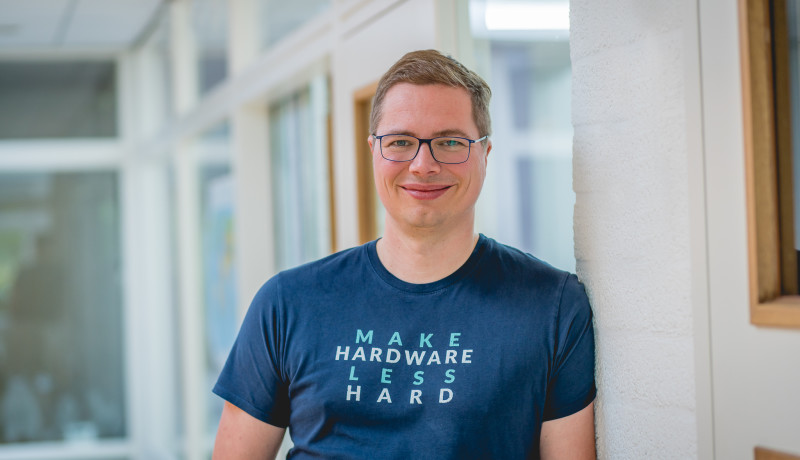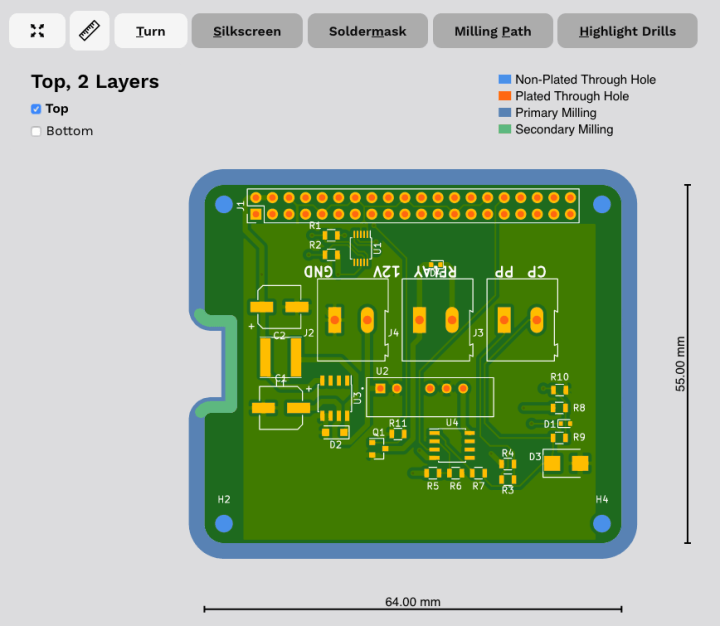Vereenvoudiging fabricage van elektronica: Felix Plitzko over het "minder moeilijk" maken van hardware prototyping
op

Electronics manufacturing is rarely easy, especially when dealing with a global crisis such as COVID-19 and global material shortages. Fortunately, the production process can be simplified with the right tools and services. Felix Plitzko, CEO of AISLER, talks about the company's mission to make hardware prototyping, assembly and series production "less difficult".
Electronics Manufacturing Challenges
Abate: The electronics industry has changed a lot since we last spoke in 2018. The COVID-19 crisis and a global chip shortage are just two of the biggest challenges for our industry. How is AISLER doing these days?
Plitzko: We're doing great. Initially, COVID-19 was felt in February 2020. Because all factories abroad were closed longer than expected, we were literally inundated with orders. We've quadrupled our numbers. This is where our platform really shined ( Image 1). Because everything from taking the order to manufacturing the order on our partners' shop floor is automated, we were able to scale up easily. By automating the right things and partnering with the right local manufacturing companies, we can deliver an infinite demand on time and on budget. This year, most of the customers who came from abroad have stayed with us later - something that never happened in previous years.

Chip shortages, on the other hand, affected all of our customers. However, because we connect directly to each distributor's inventory and can provide a live overview of global offerings, customers have adapted to this by either providing us with scraps from their stocks or modifying their designs accordingly. The great thing about automation is that we don't have to let the customer buy large quantities in advance, but actually buy everything the moment the customer places the order, because we know it's available at that time.
Abate: What has been your approach to sustaining AISLER's business since the COVID-19 crisis began in early 2020?
Plitzko: When it became clear that we needed to start social distancing, we switched to remote working in no time at all: we literally picked up all the PC hardware from our office and brought it to every employee's place. However, we had to make some adjustments to the way we organize our business and software development pipeline to make sure they can be done anywhere. The crisis has therefore helped us to professionalize our processes. Interestingly, customers from abroad who had come due to factory closures in February stayed on board later. That helped us multiply our impact to reduce costs and improve our service. We still believe that local production should always be faster, should have better service and still be more affordable than anything shipped from abroad. The time in our home offices has really helped us focus on that. Today I can say that we serve more than 40,000 technicians worldwide and our customer satisfaction has never been better.
Hardware Prototyping
Abate: When I interviewed you in 2018, you mentioned that AISLER's goal was to make prototyping "as enjoyable and effortless as possible" for your customers. Is that true today? Has your mission changed?
Plitzko:We still strive to make prototyping as enjoyable and effortless as possible, but we've broadened our mission to include assembly and series production: Make hardware prototyping less difficult. An engineer should focus on the innovation of the electronics project, not the production. We therefore invest in building tools for our customers that allow them to improve their design as quickly as possible. For example, we want to encourage our customers to make simpler designs, because this will save them a lot of costs later in the production process. We created a classification engine that analyzes a design based on its complexity. We then communicate with the customer whether it is simple or complex. Customers have started optimizing their designs to get a better rating. Simplifying your design before manufacture can save costs later by simplifying production at scale, as certain costly pitfalls can usually be easily avoided. We want to notify our customers as early in the process as possible so that they don't wake up and have to pay for something that may not have been necessary. Sounds counterintuitive at first, as we could make so much more money just pushing them the other way, but we believe that projects need to be as simple as possible in order to thrive. We want to notify our customers as early in the process as possible so that they don't wake up and have to pay for something that may not have been necessary. Sounds counterintuitive at first, as we could make so much more money just pushing them the other way, but we believe that projects need to be as simple as possible in order to thrive. We want to notify our customers as early in the process as possible so that they don't wake up and have to pay for something that may not have been necessary. Sounds counterintuitive at first, as we could make so much more money just pushing them the other way, but we believe that projects need to be as simple as possible in order to thrive.
Abate: You also said in 2018 that you had delivered prototypes to over 100 countries. And you noticed that a third of your customers were based in the United States. What do you say about today?
Plitzko: Proximity is important. There are more reasons for this than ever before. It is extremely important for us to keep the ecological footprint low for the entire process, from production to logistics. Proximity is also a direct benefit for our customers, as it keeps logistical complexity low. So much can and will go wrong when shipping your goods around the world compared to the three hour drive to our next partner factory. All of this leads to strong, above-average growth, wherever we are. That's why we plan to expand our service to even more countries in the EU, as well as improve our US operations.
Abate: Let's talk about your website, Aisler.net. A few technicians from the Elektor's Lab team tried it out and were impressed. Their feedback was positive: Gerbers from KiCad worked well with no issues, the "Blitz" service was quick and easy, and your pricing is affordable. Who are your purpose of your service? Professional technicians? Makers? Is there a "typical" AISLER customer interested in electronics manufacturing?
Plitzko:First of all we would like to thank your technicians, we are proud of this overwhelming feedback. We are pleased that our service is used in many sectors, from individuals (Figure 2) to public organizations to large corporations. Making electronic production available and affordable to everyone also means that it doesn't matter whether it is a company or an individual. Other players in our industry often limit their offerings to companies, which in our perspective is downright discrimination. It prevents innovation in the initial phase, which often happens by makers around the corner.

Plans for the future
Abate: What does AISLER have planned for 2022?Plitzko: In a broader perspective, our future couldn't look brighter as we are at the forefront of several megatrends: First, the electrification of everything we know will continue to excel. Second, industries will increasingly automate supply chains to make them more efficient. Third, we will see much more nearshoring of production to be more sustainable and reduce the carbon footprint. Our platform combines all these megatrends and they are deeply rooted in the DNA of our company. So we will continue to invest all our resources in these areas.
More specifically, our ambition is to provide our customers with the best one-stop shop for all their electronic manufacturing needs. COVID-19 and the material shortage have shown that the best partners are local. Through our network of partners, we can ensure that all orders can be fulfilled within budget and on time. Product-wise, we will be expanding our Amazing Assembly offer considerably. Starting with a one-off prototype and then moving to a small to medium production with the same partner is a big advantage for many of our customers. Making this process as smooth and error-free as possible will be a major task in 2022.
In addition to our physical products, we continue to invest in supporting our customers with our Smart Services. Integrated into our online platform, these services help them improve their designs faster, significantly reducing mass production costs. We are launching a revamped Smart Viewer soon, have plans to expand the features of our Smart Bomb, and will most likely launch additional Smart Services.
We are really looking forward to 2022! Especially together with our customers and partners we believe that the new year will be a blast!
Would you like to know more about Aisler and its services for simplifying electronics production? Read the full version of this interview in the forthcoming November 2021 issue of Elektor Industry .
Translation: Hans Adams


Discussie (0 opmerking(en))